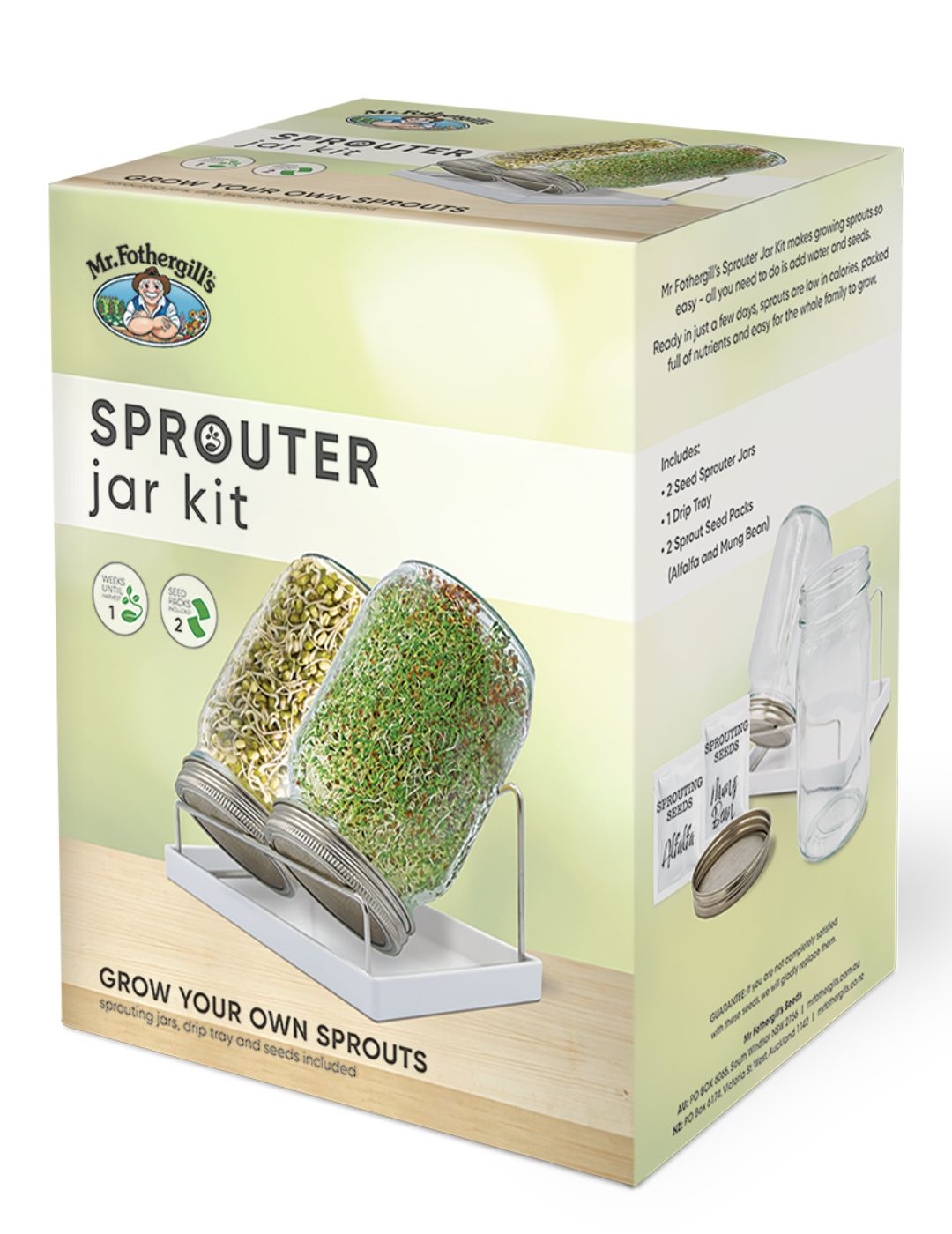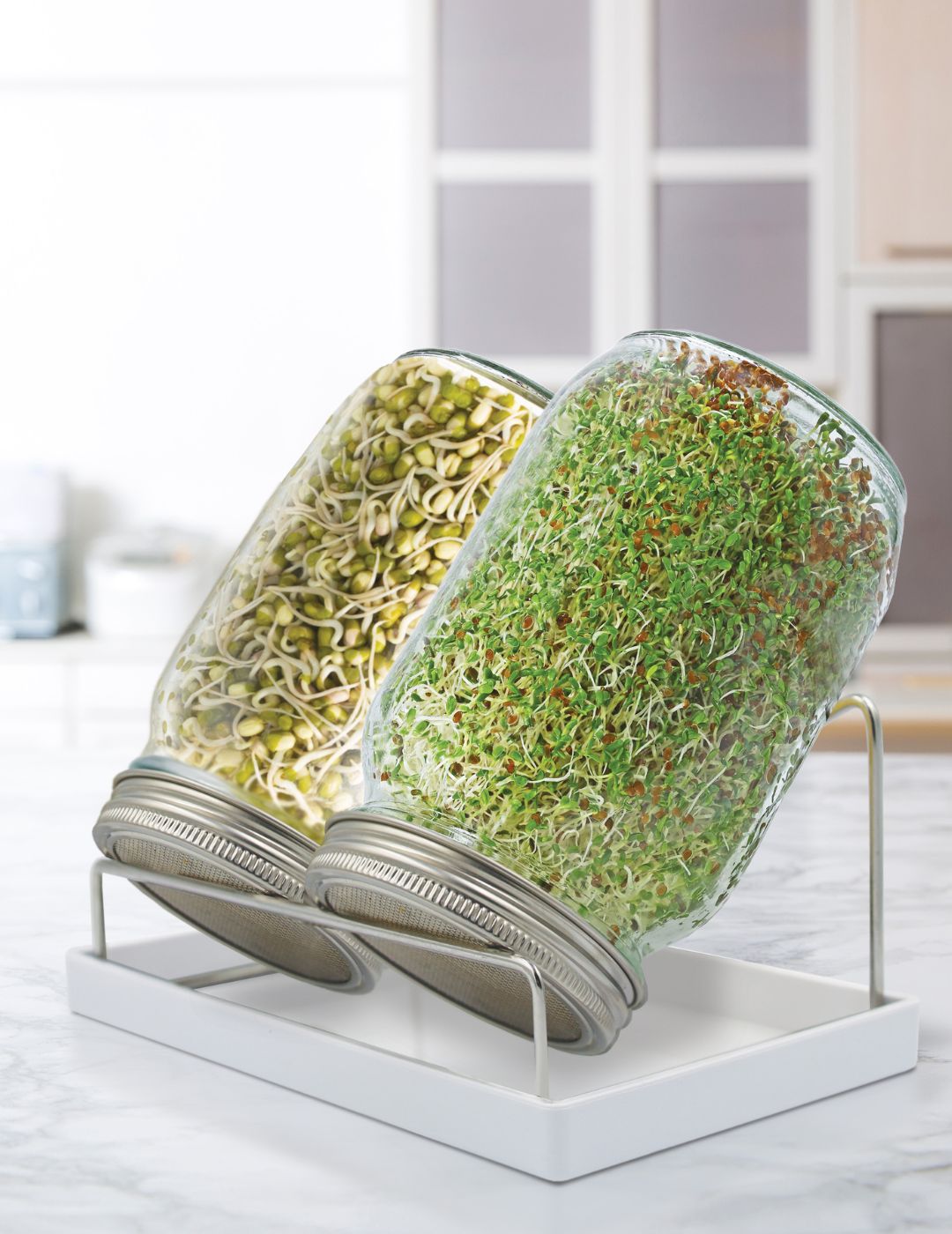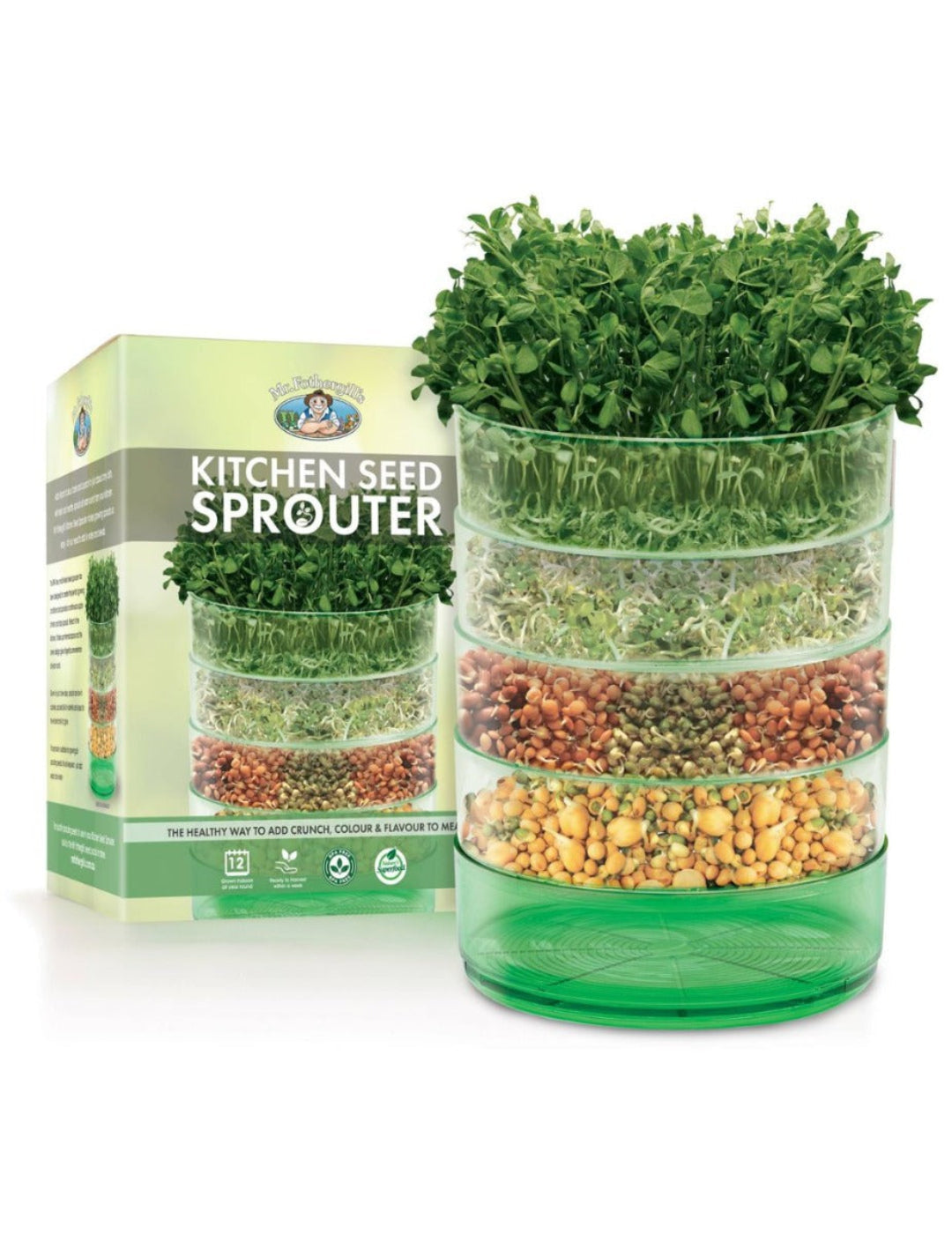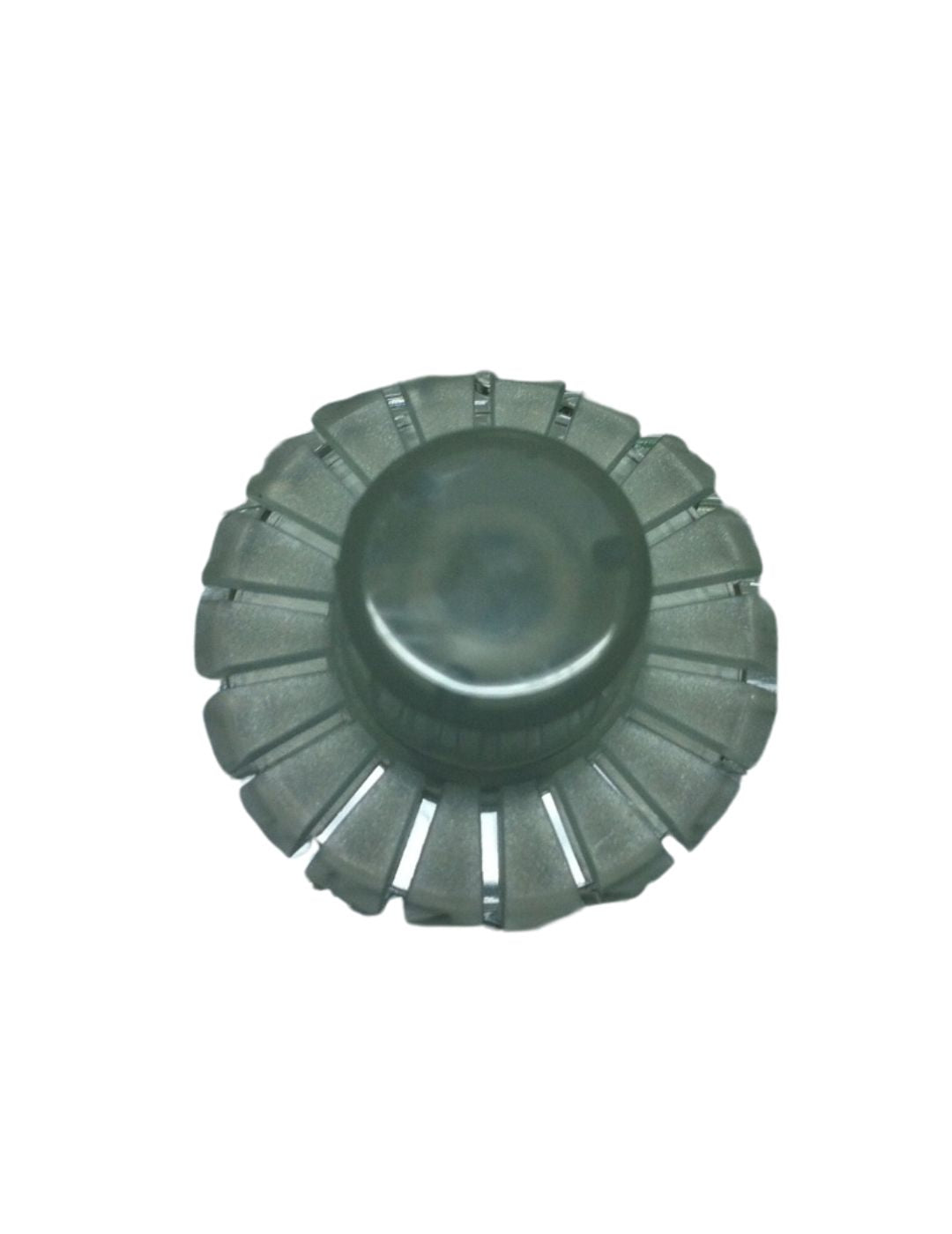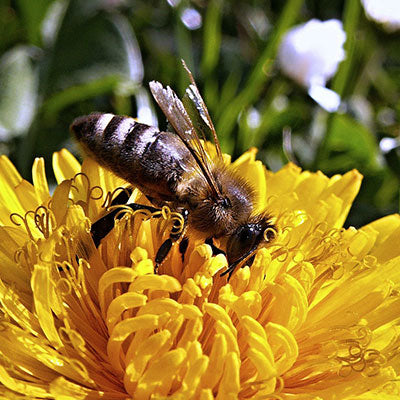Sprouting is the easiest way to grow your own fresh produce. A seed sprouter provides fast results, with sprouting seeds ready to harvest in as little as four days. With a Mr Fothergill’s Kitchen Seed Sprouter, you can grow all kinds of fresh sprouting seeds in your kitchen, perfect for adding to your cooking. These easy-to-grow seeds can be the ideal introduction to gardening with kids; with a short growth time, sprouting seeds are a simple and effective way to add flavour to your meals.
To help you make the most of your kitchen sprouter and sprout seeds, we have put together all you need to know about using a seed sprouter and the quality seeds you can find here at Mr Fothergill’s! Find out how to use a seed sprouter, the times of year you can grow seeds when you should harvest them, and if you can use normal garden seeds as well as sprouts.
What Do You Need to Use a Seed Sprouter?
When you choose a Mr Fothergill’s Kitchen Seed Sprouter, you only need to find the sprouting seeds you wish to grow and then add water. It’s that simple! Our kitchen seed sprouter is multi-tiered and was designed to create the perfect conditions for growing while also taking up little space, making it a great addition to any kitchen.
To get the best results from your Mr Fothergill’s Kitchen Seed Sprouter, first spread about 1 tablespoon of seeds in one or more of the four clear plastic trays. Stack the clear trays on top of the bottom tray and pour enough water into the top tray to cover the outlet. This will commence the syphoning action and water will drain down through each of the trays and outlets.
Once the water has drained, empty any excess water from the bottom tray. The water that stays in the clear trays is enough to provide the necessary humidity for successful seed germination. Water in this way at least 2-3 times each day.
Once the seeds have grown, it is time to harvest them! To ensure they last, place them in a dry container or in the fridge in an airtight container. Got more questions? Let’s get them answered below!
Frequently Asked Questions about the Mr Fothergill’s Seed Sprouter
Can I grow sprouts all year round?
The beauty of sprouting seeds is that, in suitable conditions, they can be grown at any time of the year. In your vegetable garden, you are limited to windows of the year for perfect growing conditions, but with a kitchen seed sprouter, you can grow all kinds of seeds indoors in a suitable climate with only a few exceptions.
During very cold or humid weather, the conditions are not ideal for growing, so in winter, find a warm spot for your sprouter and in the hot northern regions avoid the most humid months.
Can I grow normal garden seeds as sprouts?
Standard garden seed varieties do not go through microbiological testing like our sprouting seeds do. This testing is important because you will consume both the plant and the seed itself, and we want to ensure the seeds don’t carry pathogens like salmonella or e-coli. However, you can grow select garden seeds as microgreens, as you will consume just the plant and not the seed, but these may not taste as good as specifically bred microgreen seed varieties.
What seeds can I grow in a seed sprouter?
Seed selection is important because when sprouting, you consume the seed. Ensure you use seeds that are specifically produced for sprouting. Regular garden seeds are not suitable as they may be treated or carry bacteria.
Mr Fothergill's range of sprouting seeds are microbiologically tested, untreated, non-GMO and chemical free. No risk to you or the environment.
Does the Mr Fothergill’s Kitchen Seed Sprouter use BPA-free plastic?
The Mr Fothergill’s Kitchen Seed Sprouter is polystyrene (#6 plastic) which is BPA-free and food-safe.
How many seeds should I put in each tray of the sprouter?
Only a spoonful or two. You don’t want to overfill the tray as it will restrict airflow and can spoil the harvest. The seeds will also swell up significantly as they germinate and take up more space.
My sprouter isn’t draining properly. What should I do?
The Sprouter outlet caps may be too tight after production. Jiggle them a bit or remove them and put them back a few times to loosen them up. Also, make sure you add enough water when rinsing your sprouts. You want the water to cover the cap completely for the siphoning action to start.
My sprouts seem to be growing what looks like white mould. Is it?
What you might think of as mould could, in fact, be very fine hair roots. Some seed varieties grow these roots particularly if they dry out a bit - as an effort for the plant to find more moisture. So if the sprouts smell fine, and the 'mould' is white and not grey or green, then it's just the fine root systems!
My sprouts have quite a strong smell. Is that normal?
You may notice an odour in the first couple of days when some seeds (e.g. broccoli and other brassicas) are sprouting. A slight odour is nothing to worry about, but to minimise it, water more frequently and be sure to empty the bottom tray regularly.
When should I harvest my sprouts?
This is largely dependent on personal preference; some like to eat sprouting seeds as soon as they start to germinate, and others like a slightly higher plant-to-seed ratio. However, the larger the seed, the less growth you would usually want.
This is mainly because large-seeded varieties like snow peas start to grow fairly large roots very quickly, and often the roots can be the least appetising part of the plant. If you like the more mature shoots of, for example, snow peas or wheatgrass, grow them in a microgreens growing tray where you can cut off the seed and root and only eat the shoot.
You should not leave your sprouting seeds any longer than 10 days before harvesting them to get the most beneficial harvest before they begin to turn.
Can I feed sprouts to animals?
Yes, indeed, you can! Sprouts are just as healthy and delicious for animals as they are for humans. Particularly, birds like budgies and chickens absolutely love all types of sprouts. For dogs, we recommend varieties like clover, alfalfa, broccoli, lentils & mung beans. Just grind the sprouts in a food processor before mixing them into the dog food. We all know that cats love cat grass, but wheatgrass is also good for them. If your cat won’t eat the wheat as sprouts (seed and all), grow them as microgreens so they can chew on the leaves. Wheatgrass is also excellent for little critters like rabbits, hamsters, and guinea pigs.
Gardening Advice from Mr Fothergill’s Seeds
At Mr Fothergill’s Seeds, we are passionate about providing the perfect seeds for you to grow at home. Sprouting seeds are a great way to get the whole family involved in gardening, so why not pick up a selection of sprout seeds with a kitchen seed sprouter and have a kitchen full of tasty sprouts ready to be added to a freshly cooked dinner or kids’ sandwiches to give them a bit of crunch and nutrition in their school lunch.
If you have any questions about our Mr Fothergill’s Kitchen Seed Sprouter or any of our vegetable seeds, then be sure to contact us or take a look at our gardening advice blog, where we have even more insightful tips and tricks for growing all kinds of vegetable seeds, fruit seeds, and flower seeds in your garden or home.


























